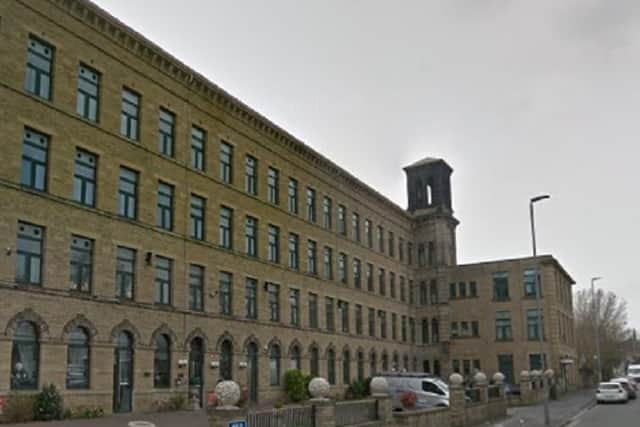Plan to build 5G mast on listed mill thrown out by Government planning inspector
Last year Bradford Council refused a planning application to renew the masts installed on Grade II listed Legrams Mill, on Legrams Lane.
The plans, submitted by Conrnerstone on behalf of Telefonica (O2) and would have seen existing masts, located inside the two towers on the mill, replaced by 22 metre tall masts fixed to the outside of the towers.
Advertisement
Hide AdAdvertisement
Hide AdCouncil heritage officers said the works would “harm the architectural elegance” of the former spinning mill, which is occupied by a banqueting hall and apartments.


The telecoms giant appealed against this decision last December, and now a Government appointed planning inspector has made a decision on the appeal.
Inspector F Cullen has sided with Bradford Council, agreeing that the new antennae would harm the building.
The building was designed by Lockwood & Mawson – the architects behind some of Bradford’s most striking buildings.
Advertisement
Hide AdAdvertisement
Hide AdWhen the plan was refused, Bradford Council’s Heritage Office Jon Ackroyd said: “The dominant features are the two open stone belvedere towers, with paired apertures to each aspect, under a shallow pyramidal roof.
“These are a ‘signature’ feature of Lockwood & Mawson mills, evident on Salts Mill and formerly on Drummonds Mill.”
He said while there were already antennae on the towers, the 5G masts will be much more prominent.
In the appeal Cornerstone said while the mill was a sensitive building, the plans needed to be weighed against the benefits of the new 5G infrastructure. It added: “Had the council carried out the required weighing of harm against public benefit it would have concluded the balance was overwhelmingly in favour of support for such development.”
Advertisement
Hide AdAdvertisement
Hide AdHowever, Mr Cullen disagreed with this take. His appeal decision said: “The size, scale and architectural grandeur of the building, particularly the staircase towers, combined with the topography of the surrounding land, cause it to be a highly prominent landmark structure in short and long range views along Legrams Lane and from neighbouring streets.
“The strong imposing nature and pleasing symmetry of the main block fronting onto Legrams Lane, in conjunction with the architects’ characteristic incorporation of Italianate detail and striking staircase towers, make notable contributions to the building’s historical and aesthetic values and thus its special interest and significance.
“From the information submitted, the fixing of six large poles to carry the antennae onto the ashlar stone of the towers would cause permanent damage to the historic fabric of the building.
“In addition, the highly conspicuous positions of the antennae and their awkward projection out from the face of the stone would detrimentally alter the architectural form, symmetry and historic integrity of the towers.
Advertisement
Hide AdAdvertisement
Hide Ad"Ultimately, the antennae would appear as highly discordant modern additions on this heritage asset and would adversely diminish its identified special interest and significance.
“The proposed development and works would fail to preserve the Grade II listed building, Legrams Commercial Centre, or any features of special architectural or historic interest that it possesses.
--------------------------
Support The Yorkshire Post and become a subscriber today. Your subscription will help us to continue to bring quality news to the people of Yorkshire. In return, you'll see fewer ads on site, get free access to our app and receive exclusive members-only offers. Click here to subscribe.
Comment Guidelines
National World encourages reader discussion on our stories. User feedback, insights and back-and-forth exchanges add a rich layer of context to reporting. Please review our Community Guidelines before commenting.